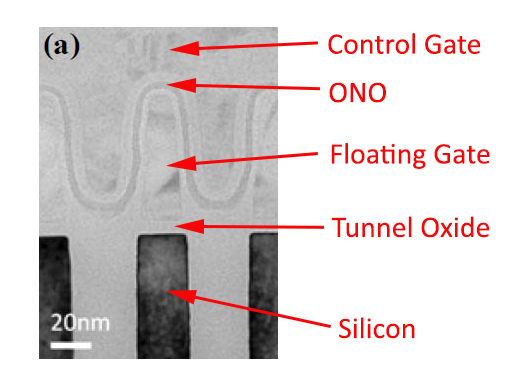The Truth About SSD Data Retention
by Kristian Vättö on May 13, 2015 3:42 PM EST
In the past week, quite a few media outlets have posted articles claiming that SSDs will lose data in a matter of days if left unpowered. While there is some (read: very, very little) truth to that, it has created a lot of chatter and confusion in forums and even I have received a few questions about the validity of the claims, so rather than responding to individual emails/tweets from people who want to know more, I thought I would explain the matter in depth to everyone at once.
First of all, the presentation everyone is talking about can be found here. Unlike some sites reported, it's not a presentation from Seagate -- it's an official JEDEC presentation from Alvin Cox, the Chairman of JC-64.8 subcommittee (i.e. SSD committee) at the time, meaning that it's supposed to act as an objective source of information for all SSD vendors. It is, however, correct that Mr. Cox works as a Senior Staff Engineer at Seagate, but that is irrelevant because the whole purpose of JEDEC is to bring manufacturers together to develop open standards. The committee members and chairmen are all working for some company and currently the JC-64.8 subcommittee is lead by Frank Chu from HGST.
Before we go into the actual data retention topic, let's outline the situation by focusing on the conditions that must be met when the manufacturer is determining the endurance rating for an SSD. First off, the drive must maintain its capacity, meaning that it cannot retire so many blocks that the user capacity would decrease. Secondly, the drive must meet the required UBER (number of data errors per number of bits read) spec as well as be within the functional failure requirement. Finally, the drive must retain data without power for a set amount of time to meet the JEDEC spec. Note that all these must be conditions must be met when the maximum number of data has been written i.e. if a drive is rated at 100TB, it must meet these specs after 100TB of writes.
The table above summarizes the requirements for both client and enterprise SSDs. As we can see, the data retention requirement for a client SSD is one-year at 30°C, which is above typical room temperature. The retention does depend on the temperature, so let's take a closer look of how the retention scales with temperature.
EDIT: Note that the data in the table above is based on material sent by Intel, not Seagate.
At 40°C active and 30°C power off temperature, a client SSD is set to retain data for 52 weeks i.e. one year. As the table shows, the data retention is proportional to active temperature and inversely proportional to power off temperature, meaning that a higher power off temperature will result in decreased retention. In a worst case scenario where the active temperature is only 25-30°C and power off is 55°C, the data retention can be as short as one week, which is what many sites have touted with their "data loss in matter of days" claims. Yes, it can technically happen, but not in typical client environment.
In reality power off temperature of 55°C is not realistic at all for a client user because the drive will most likely be stored somewhere in the house (closet, basement, garage etc.) in room temperature, which tends to be below 30°C. Active temperature, on the other hand, is usually at least 40°C because the drive and other components in the system generate heat that puts the temperature over room temperature.
As always, there is a technical explanation to the data retention scaling. The conductivity of a semiconductor scales with temperature, which is bad news for NAND because when it's unpowered the electrons are not supposed to move as that would change the charge of the cell. In other words, as the temperature increases, the electrons escape the floating gate faster that ultimately changes the voltage state of the cell and renders data unreadable (i.e. the drive no longer retains data).
For active use the temperature has the opposite effect. Because higher temperature makes the silicon more conductive, the flow of current is higher during program/erase operation and causes less stress on the tunnel oxide, improving the endurance of the cell because endurance is practically limited by tunnel oxide's ability to hold the electrons inside the floating gate.
All in all, there is absolutely zero reason to worry about SSD data retention in typical client environment. Remember that the figures presented here are for a drive that has already passed its endurance rating, so for new drives the data retention is considerably higher, typically over ten years for MLC NAND based SSDs. If you buy a drive today and stash it away, the drive itself will become totally obsolete quicker than it will lose its data. Besides, given the cost of SSDs, it's not cost efficient to use them for cold storage anyway, so if you're looking to archive data I would recommend going with hard drives for cost reasons alone.














86 Comments
View All Comments
PrinceGaz - Friday, May 15, 2015 - link
I suspect throwing a hard disk on a shelf for any length of time would be quite detrimental to it :ppiiman - Saturday, May 16, 2015 - link
Read it againparlinone - Saturday, May 16, 2015 - link
retention rate is also exponential to usage, so for a fresh drive used under normal circumstances retention is 1000+ years. I am surprised this wasnt mentioned in the article.It's when a heavily used disk (10 yrs of near continuous writing IIUC) is stored in higher temperatures then when in use, that you get in single weeks territory.
CoreLogicCom - Wednesday, May 13, 2015 - link
Does anyone find it coincidental that the subcommittee that is headed by a mechanical hard drive company person and the one who wrote the report that also works for a mechanical hard drive company would come out with a report that causes panic among ssd adopters just about the time large and cheaper ssds are poised to relegate most mechanical hard drives to second class status?e36Jeff - Wednesday, May 13, 2015 - link
If you actually read the report, it is only going to cause panic among those that lack reading comprehension. It basically says if you have exceeded the write endurance of the drive, it may only retain data for a year or so. The vast majority of drives are nowhere near their write endurance limits and will have no issues retaining data.Kristian Vättö - Wednesday, May 13, 2015 - link
Seagate makes SSDs and owns SandForce, one of the largest SSD controller suppliers. HGST also makes SSDs and has been making a big push to the market in the recent years. Also, the presentation is several years old because I've used the data in it in several articles -- someone just decided to dig it up for a story now. Lastly, the actual retention data was submitted by Intel, so I find it very unlikely to be biased/modified.DCide - Wednesday, May 13, 2015 - link
Then if this was something nefarious, the seeds were planted a few years ago. This is how it works sometimes - it takes a while, but the seeds eventually sprout (whether for good or evil).I hope this wasn't the case here. Possibly someone, somewhere along the way wanted this to happen. Everyone else unwittingly contributed.
mkozakewich - Wednesday, May 13, 2015 - link
But don't you agree it's an awful co-incidence that "Alvin Cox" rhymes with "cardboard box" and Frank Chu's HGST uses cardboard boxes to ship its products? This is obviously some kind of conspiracy, and not just outdated information being misread today on clickbait articles.Alexvrb - Wednesday, May 13, 2015 - link
They're on to you! Lock your doors and stash your SSDs with the mehvidence in the freezer.I for run will be moving my SSDs behind my PC so the hot exhaust keeps them warm during operation, and I'll keep them cool with a nearby portable A/C unit when not in use.
DCide - Wednesday, May 13, 2015 - link
I wouldn't rule out the possibility that there's a correlation here. But it's rather hard to know that this was planned - especially without being close to the situation.This is why self-serving political leaders can get away with so much. They don't actually make disasters happen (in most cases), but they know something's bound to happen within the next couple of years, and when it does they spring into action to take full advantage of it - almost as if they'd planned it.
So yes, it's possible he created the presentation knowing there was a good chance the press would pick up on this and report on it in with "panic" headlines. And that even after the situation was explained accurately, it would have created enough lingering doubt (and most importantly, with a negative emotion still attached to the memory) it would create a small shift back to more hard drive sales.
But I have no idea of their motives. With a politician, if you're paying attention (and don't actually take perverse comfort in being deceived) we can usually discern the motives after a little while. But these men I don't know at all, so I have no idea whether they wanted this to happen.